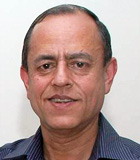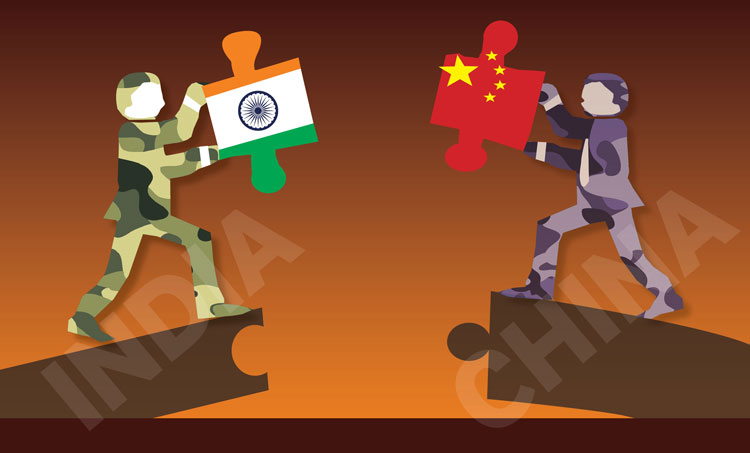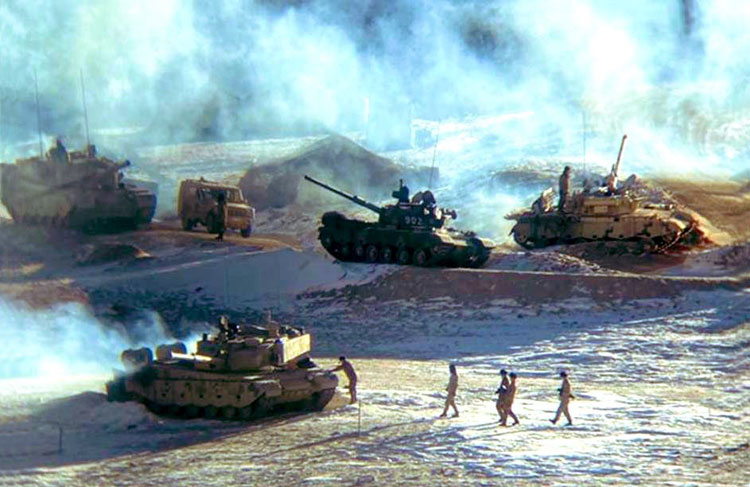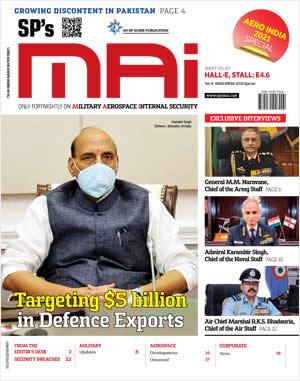INDIAN ARMED FORCES CHIEFS ON OUR RELENTLESS AND FOCUSED PUBLISHING EFFORTS

The insightful articles, inspiring narrations and analytical perspectives presented by the Editorial Team, establish an alluring connect with the reader. My compliments and best wishes to SP Guide Publications.

"Over the past 60 years, the growth of SP Guide Publications has mirrored the rising stature of Indian Navy. Its well-researched and informative magazines on Defence and Aerospace sector have served to shape an educated opinion of our military personnel, policy makers and the public alike. I wish SP's Publication team continued success, fair winds and following seas in all future endeavour!"

Since, its inception in 1964, SP Guide Publications has consistently demonstrated commitment to high-quality journalism in the aerospace and defence sectors, earning a well-deserved reputation as Asia's largest media house in this domain. I wish SP Guide Publications continued success in its pursuit of excellence.
- Operation Sindoor: Resolute yet Restrained
- India’s Operation Sindoor Sends a Clear Message to Terror and the World – ‘ZERO TOLERANCE’
- Japan and India set forth a defence cooperation consultancy framework, talks on tank and jet engines
- Terrorist Attack in Pahalgam in Kashmir: Unfolding a long surgical war against PAK
- Lt General Pratik Sharma takes over Command of Indian Army's Northern Command
15th India-China Talks in Ladakh
During the 15th round of talks, that lasted for around 13 hours, the Indian side pushed China for the resolution of remaining friction points in Ladakh but there was no breakthrough
 |
The Author is Former Director General of Information Systems and A Special Forces Veteran, Indian Army |

The 15th round of Corps Commander-level India-China talks on the standoff in Eastern Ladakh were held on March 11, 2022. For India, the talks were led by Lt General Anindya Sengupta, Commander of XIV Corps, responsible for the LAC in Eastern Ladakh. The Chinese delegation was headed by Major General Yang Lin, Commander of the South Xinjiang Military District.
Before the talks, India had hoped that a resolution on Patrolling Point (PP) 15 in Hot Springs would be arrived at. But there was no breakthrough. The usual flowery language that talks were held in cordial atmosphere and were positive remained the norm. The joint statement issued after the talks said that the “two sides carried forward their discussions from the previous round”, held on January 12, “for the resolution of relevant issues along the LAC in the Western Sector”. It said both sides “agreed to maintain dialogue via military and diplomatic channels to reach a mutually acceptable resolution at the earliest”.
The joint statement issued after the talks said that both sides “agreed to maintain dialogue via military and diplomatic channels to reach a mutually acceptable resolution at the earliest”
The statement further said that the two sides had a “detailed exchange of views in this regard, keeping with the guidance provided by the State Leaders to work for resolution of the remaining issues at the earliest”. India and China “reaffirmed that such a resolution would help restore peace along the LAC in the Western Sector and facilitate progress in bilateral relations,” the statement said. “The two sides also agreed to maintain the security and stability on the ground in the Western Sector in the interim.”

The joint statement is silent on whether an agreement was reached to disengage from PP15 in Hot Springs, which means either China refused to discuss it or did not agree to disengage from this point. Another media report has quoted an unnamed source to say that during the 15th round of talks that lasted for around 13 hours, the Indian side pushed China for the resolution of remaining friction points in Ladakh. But it was not elaborated what “remaining friction points” the Indian side pushed for. The deepest Chinese intrusion is in Depsang at Y-Junction which is 20 km deep, which has not figured in any round of talks, held so far.
We should be more than clear that if at all China does agree to disengage at Gogra-Hot Springs, chances for which are slim; it would demand another no-patrol zone stretching to a few kilometers in our territory. India had initially asked for a package disengagement from all intrusions made by the PLA and return to positions as of April 2020. This was rejected by China. China further conned us into agreeing for withdrawing from the Kailash Range, which was a strategic blunder. We should have stuck to our demand of package disengagement though the execution could be in phases. If this was not agreed to by China, at least we should have linked withdrawal from Kailash Range to Chinese withdrawal from Depsang.
But diplomatic gullibility and political urgency to cover up the extent of multiple Chinese intrusions led us to showcase disengagement along the north bank of Pangong Tso with maximum media effect even though we ended up with a 10-km long no-patrol zone in our own territory. By vacating the Kailash Range, India is without any leverage to bargain in talks and is dependent on whims and fancies of the PLA.
The joint statement is silent on whether an agreement was reached to disengage from PP15 in Hot Springs, which means either China refused to discuss it or did not agree to disengage from this point
Confirming the 15th round of high-level military talks on March 11, Chinese Foreign Ministry spokesman Zhao Lijian had stated during a media briefing on March 9 that "in the last round of talks, the two sides had candid in-depth exchanges of views on resolving the remaining issues on the western sector of the boundary. We hope at the upcoming round of talks; the two sides can make a further step forward on the border issue. We hope we can seek proper settlement of the disputes and reach a solution that is acceptable to both sides."
On March 7, Chinese Foreign Minister Wang Yi said that "some setbacks" in China-India relations in recent years are not in the fundamental interests of both the countries even as he stated that differences over the vexed boundary issue and territory should not "interfere with the bigger picture of bilateral cooperation".
Concurrently, speaking at an event at the Lal Bahadur Shastri National Academy of Administration in Mussoorie on March 9, Foreign Secretary Harsh Vardhan Shringla said, "We have made it clear to China that peace and tranquility in the border areas is essential for the development of our relationship. Development of India-China relationship has to be based on 'three mutuals' — mutual respect, mutual sensitivity and mutual interest," on the Eastern Ladakh standoff.
By vacating the Kailash Range, India is without any leverage to bargain in talks and is dependent on whims and fancies of the PLA
It may be noted that in a press briefing ahead of the Army Day on January 15, General M.M. Naravane, Chief of the Army Staff, had said that the threat in Eastern Ladakh has by no means reduced and the Indian Army continues to deal with the Chinese military in a firm and resolute manner. He also said that war or conflict is always an instrument of last resort but if it is thrust upon India, then the country will come out victorious. China took exception to Naravane’s remarks and said it hopes “relevant people” in India will refrain from making “unconstructive Comments”.
Media reports say that the 16th round of Corps Commander-level talks on the India-China standoff in Eastern Ladakh will be held soon (?). But the hard fact is that having vacated the Kailash Range, India has no leverage at the bargaining table. Our policy makers would want these talks to continue endlessly because it helps them deflect the fact that we have lost control of some 1,000 sq km of our territory in Eastern Ladakh since the 2020 Chinese aggression. For China, further round of talks have little meaning, however difficult it is for us to digest. That is what China means by “proper settlement” given the fact that it brands India as the aggressor.





